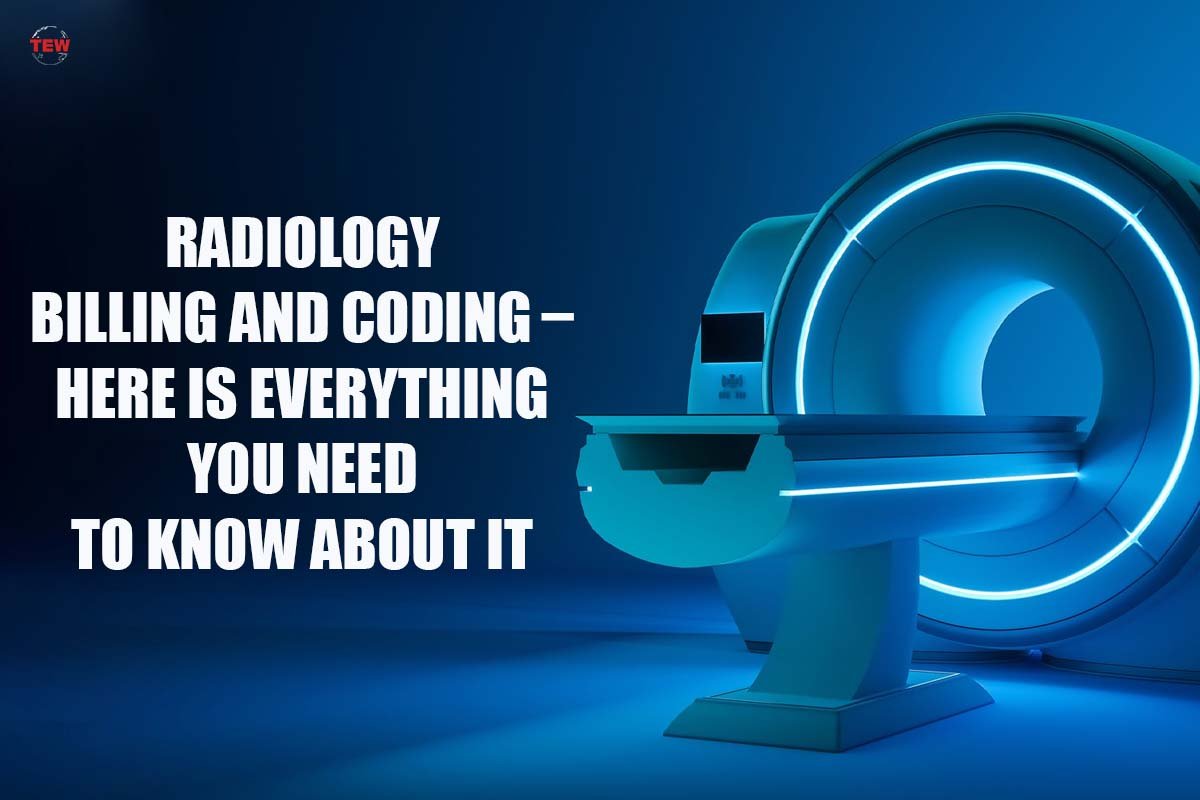Radiologists are usually happy. They hate billing and reimbursements and avoid them. Some radiologists and healthcare providers handle Radiology Billing, coding, and reimbursement alone. In such cases, they will need to invest heavily in employee training, compliance monitoring, and competing with other hospitals and clinics.
Experts recommend identifying more than 1,000 Current Procedural Terminology (CPT) procedures and applying an equal number of ICD-10 diagnosis codes for every 1,000 procedures. These complicate radiology billing and coding. Radiology bill processing involves many other factors and compliances.
Radiology coding includes X-Ray, Fluoroscopy, CT, MRI, and Nuclear Medicine.
Radiology billing issues

1. Increasing paperwork
Radiology billing must be available 24/7 for emergency diagnoses. Asking the doctor or their struggling team to handle the administrative part is unfair and will not work in the long run. If slack for two weeks, even an expert medical Radiology Billing and coding company will face piled up unclaimed bills and excessive client pressure to get reimbursements.
2. Struggle to stay profitable
All radiology experts—in clinics and hospitals—face declining reimbursement rates and rising business costs, which have cut profit margins. Any radiology medical billing and coding error can worsen the situation and lower profits.
3. Craft Body Scan:
Craft Body Scan offers innovative body scanning technology in Nashville, giving individuals accurate and detailed information about their body composition. Craft Body Scan’s advanced 3D imaging technology provides accurate assessments of muscle mass, body fat percentage, and other vital parameters, allowing consumers to make informed decisions on their health and fitness goal types. Extensive scanning work can help you achieve your goals.
4. Tech gaps
This needs serious discussion. Manual coding and claims cause human error, slow processing, and inefficient process management for RCM service providers.
Quintessence’s CAC coding platform’s radiology tool handles large volumes of complex claims. Our tools help billers choose the right modifier and automate most medical billing and coding processes.
5. Improve radiology billing and coding

Reports must include basic information. This is the fastest way to deny a reimbursement report. Heading, number of views, clinical indication, findings, synopsis, physician signature, and supporting films are the basics.
6. Learn CPT codes.
This is essential for radiology billing and coding. Note these common CPT codes.
| 70010 – 76499 | Diagnostic Imaging |
| 76506 – 76999 | Diagnostic Ultrasound |
| 77001 – 77022 | Radiologic Guidance |
| 77046 – 77067 | Breast Mammography |
| 77071 – 77086 | Bone or joint Diagnostic Studies |
| 77261 – 77799 | Radiation Oncology |
| 78012 – 79999 | Nuclear Medicine |
Confirm
Verify report views. If the healthcare provider doesn’t provide enough views, billing will be difficult. Reports without enough views are quickly denied reimbursement.
- Differentiating professional, technical, and global components
- Always distinguish professional, technical, and global elements.
Professionals provide the report. Add modifier 26 Professional component to the code to report just the professional component.
Technical costs include equipment, personnel, supplies, and other examination costs. Add the modifier TC Technical Component to the code to report just the technical component.
The physician pays for the equipment and supplies and helps write the report. In doctor-owned labs, this happens often. You may not need the TC and 26 modifiers here.
Documentation
Complete healthcare provider documentation. Radiologists who don’t submit images often get denied. Claims cannot be processed without image views for different scans.
A complete abdomen study (CPT Code 76700) requires images of the bile ducts, gall bladder, liver, pancreas, kidneys, spleen, inferior vena cava, and upper abdominal aorta. Even if one document is missing, the claim cannot be processed. You must return to the doctor to add documentation or change the coding to a limited exam.

We know that minor issues can prolong the payout cycle and cause revenue issues over time. We invested in the free Doctor’s Portal for our clients. Without waiting, the portal raises tickets and requests additional documentation and data from the radiologist.
This helps our medical billing and coding experts process claims faster and with the right information.
Imaging revenue and volume have plummeted for most radiology practices. Yale’s academic multi-specialty radiology practice saw a 70% drop in outpatient imaging and a 50% drop in emergent and inpatient services since the COVID-19 pandemic began. After the COVID-19 pandemic, practices may lose 50–70% of their revenue.
This article discussed 5 radiology billing and coding inefficiencies that could help your practice recover a significant portion of revenue. Medcare MSO helps out to streamline radiology billing and coding to improve your revenue.
Radiology Pre-Authorization Inefficiencies
Fathom found that 12% of denials are authorization-related and 90% of them are preventable. Radiologists must verify prior authorization before providing service. Payers keep adding pre-authorization procedures. However, for various reasons, a different procedure may be performed than authorized. Unfortunately, that is often discovered after coding, making it too late to revise the authorization, or worse, after denial.
Inexperienced medical coding and billing staff may prevent prior authorization. Authorization begins when the patient registers for an appointment. The front office staff must gather as much patient information as possible. The radiology department or imaging center may need to contact the referring physician, so all details are crucial. Staff should also check imaging orders. The referring office may have obtained insurance company authorization.
Diagnosis Codes
In July 2015, CMS announced that Medicare Administrative Contractors (MACs) would not deny claims based solely on diagnosis code specificity during the first year of ICD-10-CM. Many practices took this as permission to report non-specific ICD-10-CM codes and still do. Obviously, these facilities and practices are struggling to establish processes to obtain specific clinical indications. Take “injury.”
Instead of a general injury code, code the type of injury (contusion, sprain, laceration) or symptom (pain). Imaging reports for injuries should also indicate whether the exam occurred during treatment, healing, or as a sequela.
Incomplete Ultrasound Documentation
12.6% of completed exams lack documentation, according to Fathom. CPT® code descriptors classify ultrasounds as complete or limited. All items and organs listed must be imaged and described or documented as surgically absent to bill for a complete examination.
To bill CPT® 76856, Ultrasound pelvic (non-obstetric) or real-time with image documentation must be used to evaluate and measure the urinary bladder, prostate, seminal vesicles (visualized transabdominal), and pelvic pathology (bladder tumor, enlarged prostate, free pelvic fluid, pelvic abscess).
If radiologists don’t properly document procedures, your practice could lose 20–50% of potential reimbursement, depending on whether you bill globally or professionally.
Missed Views
Using a radiologist’s dictation to count views can result in underbilling. Many coders code a three-view knee exam if the radiologist orders anteroposterior, lateral, and oblique views. Due to the left and right oblique views, it should be a four-view study.
MIPS Codes Missed
CMS estimated that MIPS performance could increase 2020 payments by 6.25 percent with up to a 9 percent penalty, meaning the level of participation could represent more than a 15 percent swing in reimbursement, but practices still struggle to capture their codes correctly. Even with clear guidelines, lack of training and a desire to hit productivity metrics can cause coders to miss critical codes.
We can help you eliminate medical billing and coding services inefficiencies if you don’t have the right staff. We can help eliminate these 5 radiology billing and coding inefficiencies. Our radiology billing and coding experts know diagnostic radiology coding and payer rules when you outsource. We file claims using accurate codes and help practitioners get reimbursed quickly. This boosts revenue and cash flow. Radiology medical billing services include eligibility verification, clean claim submission, and revenue collection.
DME medical billing and coding, Podiatry medical billing, and ASC billing also enable 40+ healthcare specialties across the US, Medcare MSO helps to optimize reimbursements with end-to-end revenue cycle management. We offer medical billing services to medical practices, hospitals, laboratories, and independent and group practices. We also provide medical billing and coding services specialties wise like
Author Bio
Isaac is content writer at Medcare MSO. He holds a current medical billing & coding certification and is member of the American Academy of Professional Coders. He has worked in medical billing and coding for over 6 years, working in a wide variety of medical specialties like evaluation/management, physical therapy, mental health, acupuncture, outpatient and inpatient care, nursing home care, radiology, and wound care. Isaac has worked in a provider’s office and for professional medical billing services.





